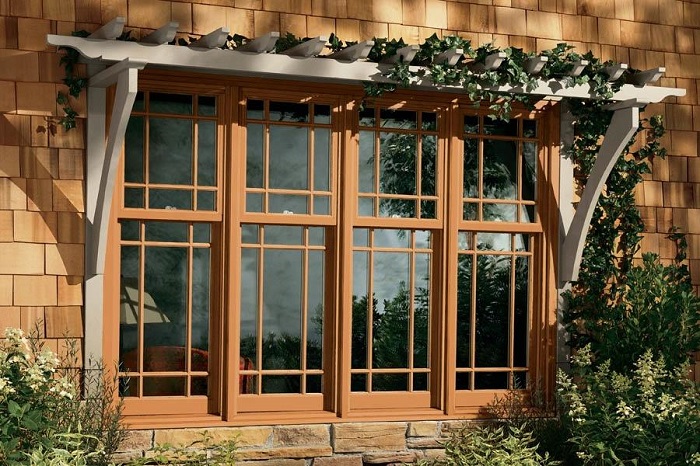Windows are integral components of a home, providing natural light, ventilation, and views of the outside world. Over time, however, windows can deteriorate due to weather, wear and tear, and technological advancements. This raises the important question: how often should windows be replaced? We’ll explore the factors that influence the lifespan of windows and deliver insights into when replacement becomes necessary for optimal functionality, energy efficiency, and overall aesthetics.
Understanding Window Lifespan
The lifespan of windows can alter significantly depending on factors such as the type of window, the quality of materials used, the local climate, and the level of maintenance they receive. Generally, the average lifespan of windows ranges from 20 to 40 years. Nevertheless, some high-quality windows can last longer with proper care and maintenance. Comprehending the factors that affect window lifespan is crucial in determining the appropriate time for a replacement.
1. Impact of Material and Quality
The material and quality of windows play a significant role in their lifespan. Wood windows, for example, can last for decades if well-maintained, while vinyl and aluminum windows are known for their durability and resistance to weathering. High-quality windows with advanced features such as double or triple panes, low-E coatings, and gas-filled insulating spaces tend to have longer lifespans. Investing in well-constructed, energy-efficient windows from the outset can extend their lifespan and delay the need for replacement.
2. Local Climate Considerations
The local climate has a profound impact on the longevity of windows. Harsh weather conditions, such as extreme temperatures, heavy rainfall, strong winds, and exposure to salty air in coastal regions, can accelerate the deterioration of windows. In areas with these challenging conditions, windows may require replacement sooner. Homeowners in such regions should prioritize windows that are specifically designed to withstand the local climate to ensure longevity and performance.
3. Signs of Deterioration
Recognizing the signs of window deterioration is crucial in determining when replacement is necessary. Common signs include visible damage such as cracks, warping, peeling paint, and water stains on the window frames or surrounding walls. Difficulty in opening or closing windows, drafts, condensation between window panes, and increased noise from the outside are also indicators of deteriorating windows. If left unaddressed, these issues can lead to energy loss, decreased comfort, and potential security risks.
4. Energy Efficiency and Comfort
Window replacement becomes particularly important when considering energy efficiency and indoor comfort. Older windows with single panes or inefficient frames can contribute to heat loss during winter and heat gain during summer. Upgrading to energy-efficient windows with multiple panes, low-E coatings, and proper sealing can significantly improve insulation and reduce energy consumption. This not only leads to lower energy bills but also enhances indoor comfort by maintaining a consistent temperature.
5. Advancements in Technology
Advancements in window technology have led to significant improvements in energy efficiency, insulation, and overall performance. If your windows were installed a few decades ago, you might miss out on these benefits. Newer windows are designed with features that prioritize energy conservation, UV protection, noise reduction, and ease of operation. If your current windows lack these features, it may be a good time to explore window replacement alternatives that align with modern technology and your specific needs.
6. Consideration for Home Improvement
Homeowners often choose to replace windows as part of larger home improvement projects. If you’re planning a renovation or remodeling project, replacing windows can enhance your home’s overall appearance and functionality. Updated windows can contribute to a more modern and cohesive aesthetic, boosting curb appeal and potentially increasing the value of your property.
7. Economic Factors
While the initial cost of window replacement can be a factor, it’s paramount to regard the long-term financial benefits. Energy-efficient windows can usher to substantial savings on heating and cooling bills, which can offset the upfront investment over time. Additionally, some regions offer incentives, tax credits, or rebates for energy-efficient home improvements, including window replacement. These financial incentives can decide to replace windows more economically appealing.
8. Professional Assessment
When contemplating window replacement, it’s advisable to seek the expertise of professionals. Window contractors can assess the condition of your existing windows and provide recommendations based on their expertise. They can help you determine whether replacement is necessary or if repairs can extend the lifespan of your current windows. Professional guidance ensures you make an informed decision aligning with your goals and budget.
The decision to replace windows relies on a combination of factors, including the type of window, material quality, local climate, signs of deterioration, energy efficiency, technological advancements, home improvement plans, economic considerations, and professional assessment. Regular maintenance and vigilant observation of signs of wear and tear can extend the lifespan of windows. Still, there will eventually come a time when replacement is the best course of action. By carefully considering these factors, you can determine the optimal timing for window replacement to enhance your home’s comfort, energy efficiency, and overall value. For residents considering window lifespan and replacement, Maverick Windows – Replacement Windows Plano offers valuable insights and expertise to determine the optimal timing for upgrading your windows.

